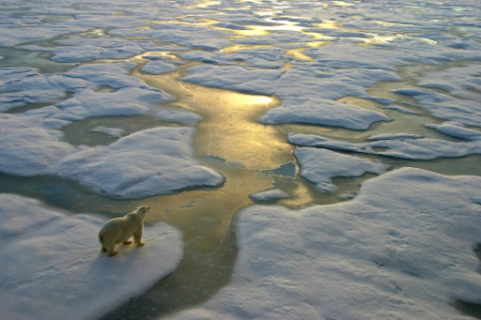The Ingenious Strategies of Polar Bears for Keeping Warm in the Tundra
Nature has equipped polar bears with a remarkable set of adaptations that enable their survival in the most demanding environments on the planet – the sub-zero temperatures of the Arctic. These amazing species live in the Arctic’s icy tundra. The temperature in the Arctic can be very cold, with summers ranging from -1°C to 10°C, and winters from -40°C to -15°C. But polar bears are very strong and can handle extreme cold. Have you ever wondered how polar bears can thrive in one of the world’s toughest environments?
The Science Behind How Polar Bears Stay Warm
Engineers at the University of Massachusetts Amherst have finally achieved a decades-long effort to create a synthetic fabric based on the special characteristics of polar bear fur. The breakthrough has already led to the development of new and innovative products.
The polar bear’s skin is made specifically to keep it warm throughout the chilly Arctic winter. Polar bear skin has two layers as opposed to human skin, which has just one: an inner layer of dense, insulating fur and an outer layer of long, transparent guard hairs. While the inner layer of fur retains air and insulates the bear’s body, the outside layer of guard hairs repels water and shields it from the wind and cold.
Image credits: Upsplash
UMass Amherst Engineers Make Use Of Polar Bears Fur Traps Warmth
Protecting ourselves from the elements is the most effective way to stay warm. Polar animals have another way of regulating their body temperature, and that is through the use of sunlight.
Researchers have now fostered a texture that imitates Polar bear’s skin. Polar bear fur is like a natural fiber optic that brings sunlight to the bear’s skin. The skin then absorbs the sunlight and gets warmed up. The sun’s warmth acts like a thick blanket that warms up and clings to your skin.The material developed by the researchers resembles the top layer of the polar bear skin and has fibers that send visible light to the lower layer.
The researchers coated this layer in a dark substance known as PEDOT. Like polar bears’ skin, PEDOT, can absorb and keep energy from sunlight. Researchers at the University of Massachusetts Amherst have developed a fabric which has a bilayer structure. Senior author Trisha L. Andrew, an associate professor of chemistry and adjunct professor of chemical engineering at UMass Amherst states that, “The fur is only half the equation” and “Other half is the black skin of polar bears.”
Andrew and her group made a material that has bilayers too. The top layer has fibers that bring visible light down to the lower layer, which is made of nylon and covered with a dark substance called “PEDOT”, this is similar to how polar bear fur works. PEDOT, like the skin of polar bears, warms.
The researchers who created this fabric say that a jacket made from it is 30% lighter than one made of cotton. This special material can make an individual feel warm even if the temperature is 10 degrees Celsius colder than if you were wearing a jacket made of cotton. But you need to be in a place where there is enough sunlight or artificial light for it to work. This new kind of fabric could help save energy by keeping people warm without needing as much heat. It’s an important breakthrough that could make a big difference for the environment.
The study’s lead author, Wesley Viola, and its senior author, Trisha L. Andrew established Soliyarn. It is the company that has already put the research into production. The study has also been published in the American Chemical Society.
In conclusion, the researchers at the University of Massachusetts Amherst have made a big advancement by creating an innovative material that mimics the natural warmth-trapping capacity of polar bear fur. This research provides important insights into how polar bears stay warm in severe surroundings and opens up new avenues for lowering our dependency on heating systems while keeping us comfortable in harsher climates.This could mean using less energy to heat our homes, which would be better for the environment.




